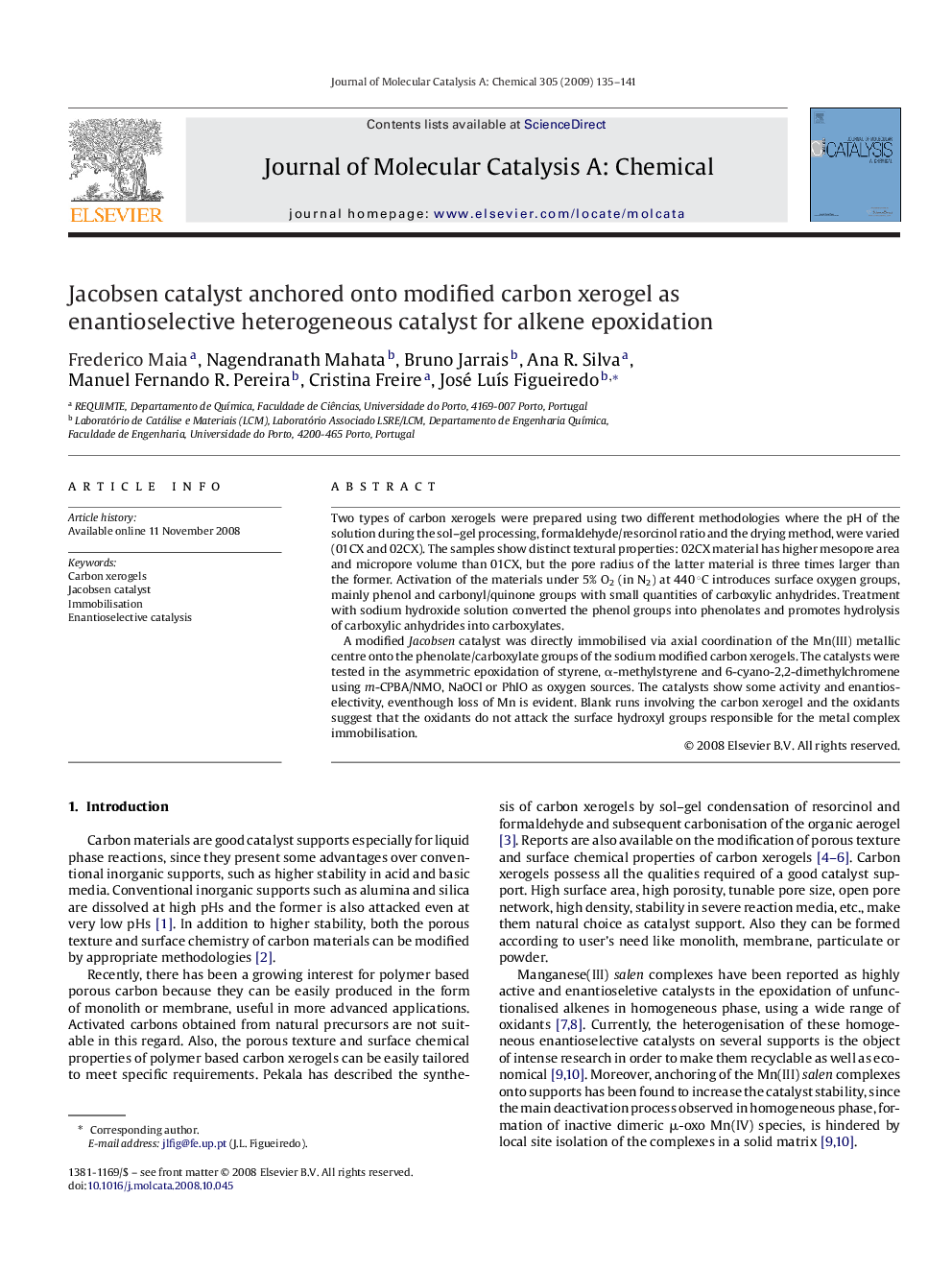| Article ID | Journal | Published Year | Pages | File Type |
|---|---|---|---|---|
| 66987 | Journal of Molecular Catalysis A: Chemical | 2009 | 7 Pages |
Two types of carbon xerogels were prepared using two different methodologies where the pH of the solution during the sol–gel processing, formaldehyde/resorcinol ratio and the drying method, were varied (01CX and 02CX). The samples show distinct textural properties: 02CX material has higher mesopore area and micropore volume than 01CX, but the pore radius of the latter material is three times larger than the former. Activation of the materials under 5% O2 (in N2) at 440 °C introduces surface oxygen groups, mainly phenol and carbonyl/quinone groups with small quantities of carboxylic anhydrides. Treatment with sodium hydroxide solution converted the phenol groups into phenolates and promotes hydrolysis of carboxylic anhydrides into carboxylates.A modified Jacobsen catalyst was directly immobilised via axial coordination of the Mn(III) metallic centre onto the phenolate/carboxylate groups of the sodium modified carbon xerogels. The catalysts were tested in the asymmetric epoxidation of styrene, α-methylstyrene and 6-cyano-2,2-dimethylchromene using m-CPBA/NMO, NaOCl or PhIO as oxygen sources. The catalysts show some activity and enantioselectivity, eventhough loss of Mn is evident. Blank runs involving the carbon xerogel and the oxidants suggest that the oxidants do not attack the surface hydroxyl groups responsible for the metal complex immobilisation.
Graphical abstractAnchoring of the Jacobsen catalyst (CAT) onto carbon xerogels (CX)Figure optionsDownload full-size imageDownload as PowerPoint slide
